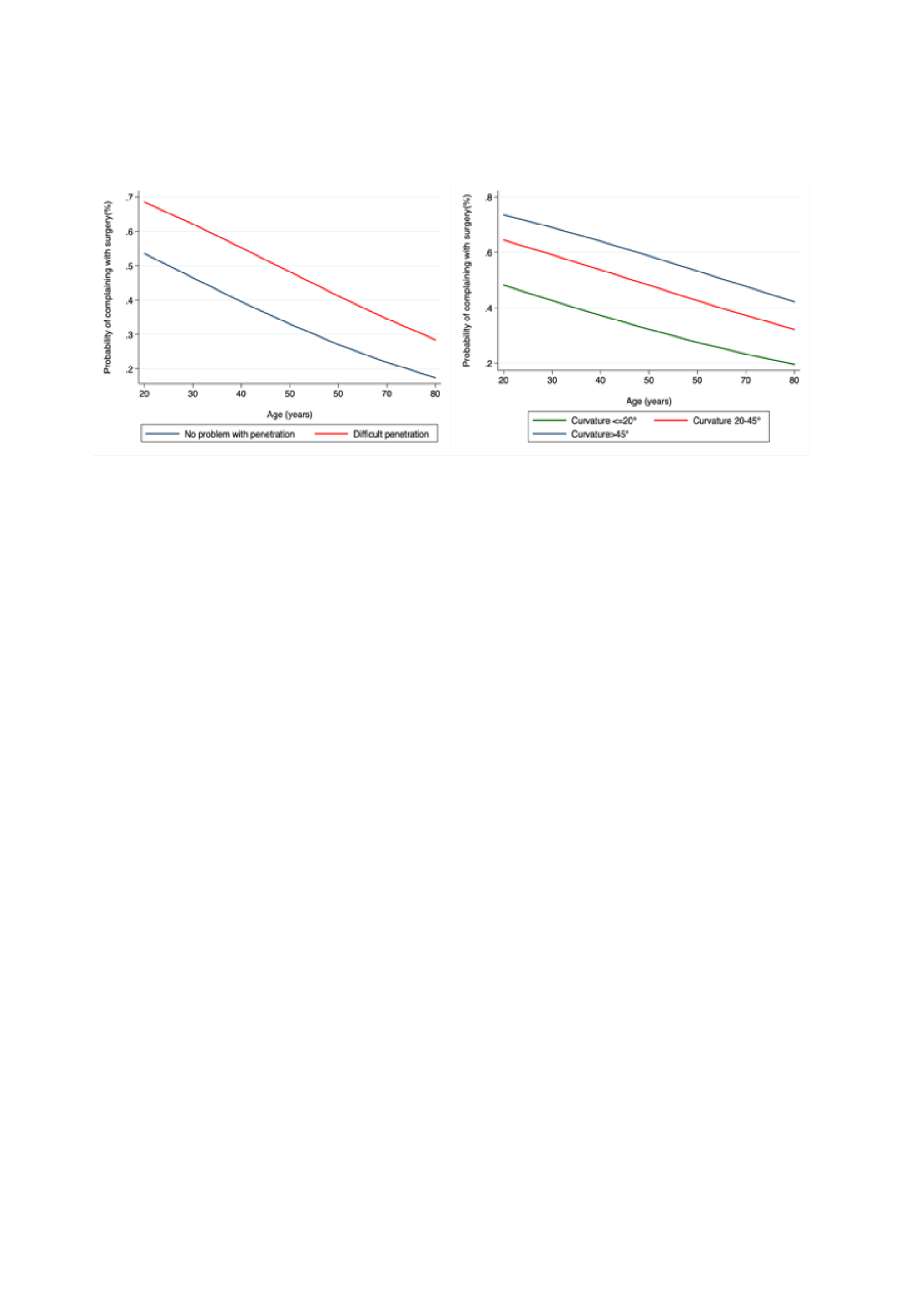Back
Poster, Podium & Video Sessions
Podium
PD23: Sexual Function/Dysfunction: Peyronie's Disease
PD23-07: Patients' compliance with surgery for Peyronie disease: a multicentre European study
Saturday, May 14, 2022
10:30 AM – 10:40 AM
Location: Room 255
Paolo Capogrosso*, Varese, Italy, Luigi Candela, Milan, Italy, Georgios Hatzichristodoulou, Würzburg, Germany, Juan I. Martinez Salamanca, Madrid, Spain, Andrea Cocci, Florence, Italy, Marco Falcone, Turin, Italy, Edoardo Pozzi, Nicolò Schifano, Milan, Italy, Giorgio Ivan Russo, Catania, Italy, Andrea Salonia, Milan, Italy
- PC
Paolo Capogrosso, MD
University Vita-Salute San Raffaele
Podium Presenter(s)
Introduction: Surgery still remains the most effective treatment for Peyronie Disease (PD), despite different conservative therapies have been suggested over time. However, surgical procedures are associated with a non-negligible risk of complications and failures. We investigated patients’ willingness of being operated for PD.
Methods: Data of PD patients were prospectively collected in 5 different European academic centers between 2016 and 2020. Baseline data included age, time from PD onset, penile pain, curvature degree, difficulty at penetration, hour-glass deformity, erectile dysfunction (ED) and previous treatments. All patients were offered conservative treatments, including either oral therapy or topical injections. Tunical shortening or lengthening procedures were offered as an alternative to conservative treatments, when indicated. Penile prosthesis implantation was offered to those with concomitant ED. Patients compliance with surgery was recorded. Logistic regression analyses tested the profile of patients who were more likely to comply with surgery.
Results: Data were available for 343 patients. Median (IQR) age was 57.3 (49.8, 63.6) years. Median curvature was 40.0° (30.0, 65.0); of all, 48 (14%) patients had concomitant hour-glass deformity and 157 (46%) reported penile shortening. Difficulty at penetration and ED were reported by 161 (47%) and 134(39%) patients, respectively. Overall, 128 (37%) patients had been treated with tadalafil once daily for no less than 12 months; 54 (16%) received verapamil injections; 30 (9%) ESWT; and, 44 (13%) CCH injections. A significant improvement (defined as a curvature reduction=20°) was reported in 69 (20%) cases. Overall, only 37% (126) patients were willing to undergo surgery for PD. Younger patients (OR:0.97, 95%CI: 0.95, 1.00; p=0.02), patients with more severe curvatures (OR:1.04; 95%CI: 1.03, 1.06 ; p= <0.0001) and patients reporting difficulties at penetration (OR: 1.88; 95%CI 1.04-3.41; p=0.03) were more likely to comply with surgery, after accounting for other clinical variables.
Conclusions: Compliance to surgery is low among patients with PD, thus further stressing the urgent need for effective conservative treatments. Surgery should be comprehensively discussed with younger patients with a severe curvature.
Source of Funding: None

Methods: Data of PD patients were prospectively collected in 5 different European academic centers between 2016 and 2020. Baseline data included age, time from PD onset, penile pain, curvature degree, difficulty at penetration, hour-glass deformity, erectile dysfunction (ED) and previous treatments. All patients were offered conservative treatments, including either oral therapy or topical injections. Tunical shortening or lengthening procedures were offered as an alternative to conservative treatments, when indicated. Penile prosthesis implantation was offered to those with concomitant ED. Patients compliance with surgery was recorded. Logistic regression analyses tested the profile of patients who were more likely to comply with surgery.
Results: Data were available for 343 patients. Median (IQR) age was 57.3 (49.8, 63.6) years. Median curvature was 40.0° (30.0, 65.0); of all, 48 (14%) patients had concomitant hour-glass deformity and 157 (46%) reported penile shortening. Difficulty at penetration and ED were reported by 161 (47%) and 134(39%) patients, respectively. Overall, 128 (37%) patients had been treated with tadalafil once daily for no less than 12 months; 54 (16%) received verapamil injections; 30 (9%) ESWT; and, 44 (13%) CCH injections. A significant improvement (defined as a curvature reduction=20°) was reported in 69 (20%) cases. Overall, only 37% (126) patients were willing to undergo surgery for PD. Younger patients (OR:0.97, 95%CI: 0.95, 1.00; p=0.02), patients with more severe curvatures (OR:1.04; 95%CI: 1.03, 1.06 ; p= <0.0001) and patients reporting difficulties at penetration (OR: 1.88; 95%CI 1.04-3.41; p=0.03) were more likely to comply with surgery, after accounting for other clinical variables.
Conclusions: Compliance to surgery is low among patients with PD, thus further stressing the urgent need for effective conservative treatments. Surgery should be comprehensively discussed with younger patients with a severe curvature.
Source of Funding: None


.jpg)
.jpg)